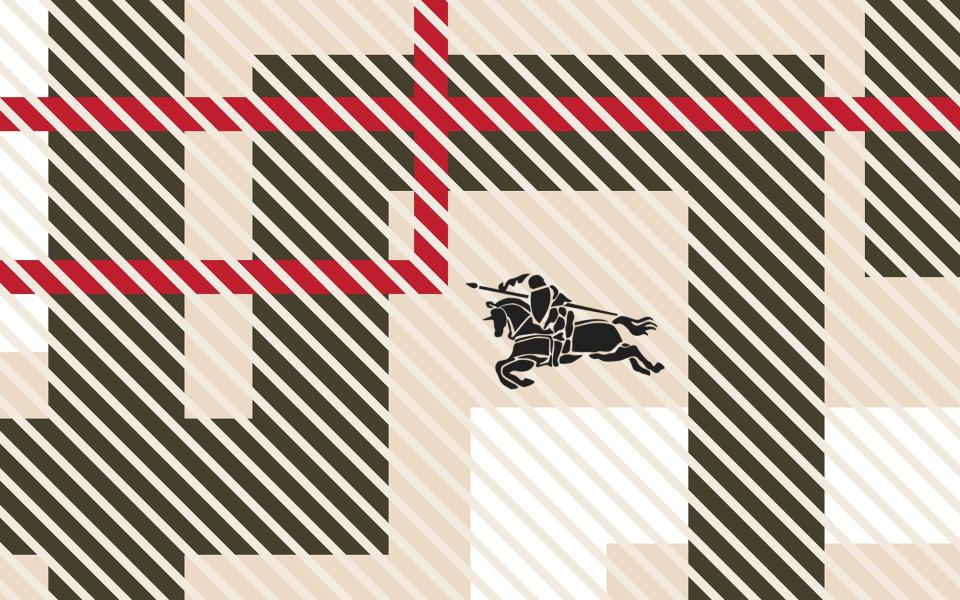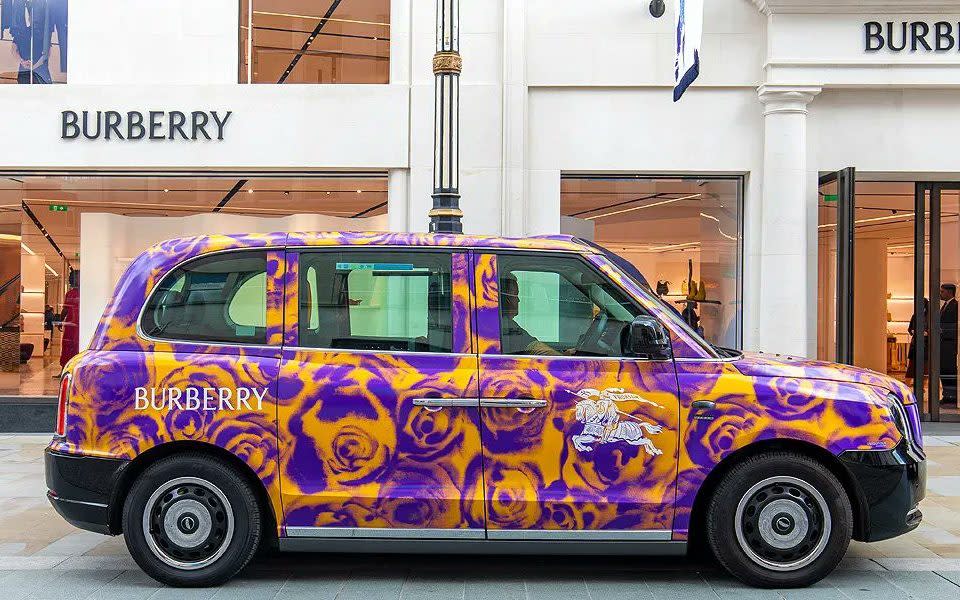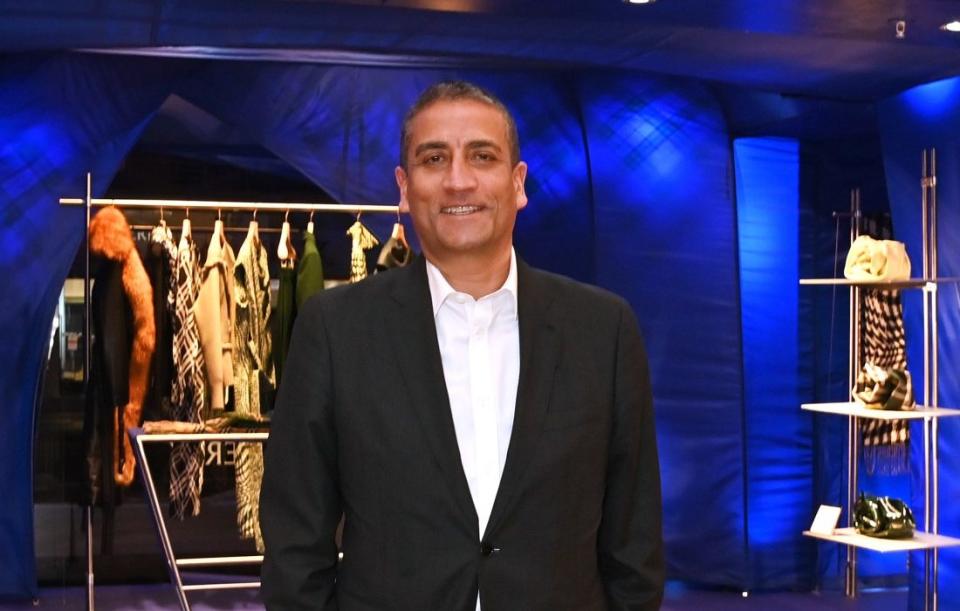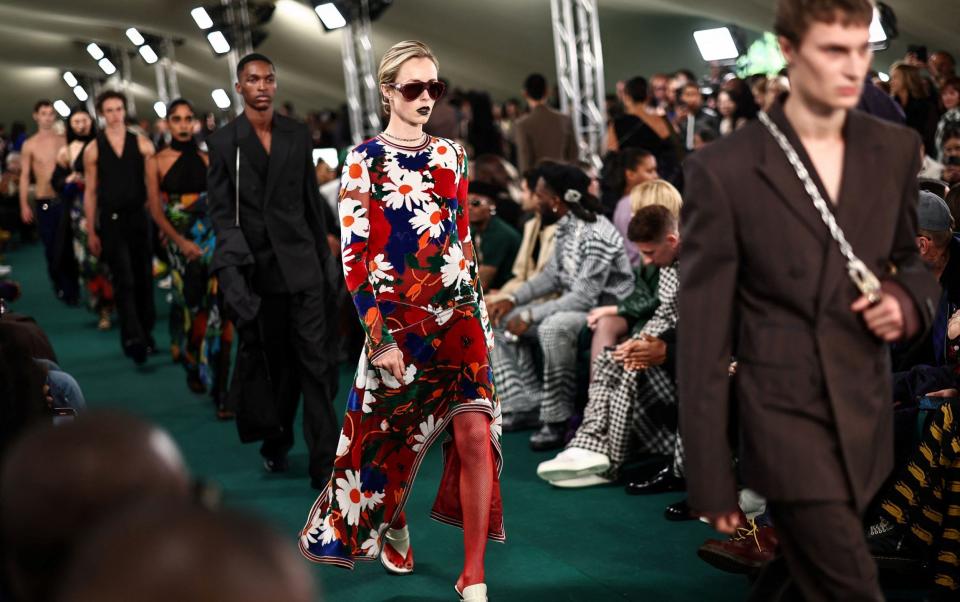How British fashion icon Burberry lost its way

From prime Kate Moss to fried egg and chips. There are few industries more fickle than fashion but the recent antics of Burberry are a reminder of how tough it is to remain relevant in the fast-moving world of haute couture.
In a desperate attempt to steal last September’s London Fashion Week, Burberry’s marketing team went into overdrive, plotting a “takeover” of various London establishments.
For a few days, Bond Street Tube station became “Burberry Street”, the capital’s black cabs were wrapped in a new Burberry English rose motif, and a popular greasy spoon cafe in north London was adorned with the blue branding that has become a central feature of its more recent designs.
The stunt backfired.
Where new creative director Daniel Lee thought it was a clever way to channel the brand’s distinctive British roots, many Londoners were angry at what was seen as one of the more egregious examples of “corporation creep”.
Others saw something potentially more grave: further evidence of a once trailblazing company that has lost its way.

Burberry’s struggles predate the current regime – a double act consisting of chief executive Jonathan Akeroyd and the artistic flair of Lee – by many years. Yet instead of overseeing a promised return to catwalk dominance, Burberry has fallen further out of fashion.
Profits have dived, debt has ballooned and its share price has crashed – leaving rivals, former executives and City experts asking where it all went wrong.
With Burberry’s shares languishing at £10.32 – the cheapest they have been for 12 years – there is fresh speculation that a company described as “sui generis in the context of the UK stock market” by star stock picker Nick Train is once again a takeover target for foreign predators and private equity.
There seems little doubt who the board blames for the malaise. After unveiling a 40pc slump in annual profits last month, Akeroyd waived his annual bonus of £2.3m, on top of his £1.1m yearly salary.
Danuta Gray, chairman of Burberry’s remuneration committee, said it would not have been “appropriate” for Akeroyd to receive a bonus. In an era where rewards for failure have become all too commonplace in boardrooms, it was a rare public snub.

The awarding of a bonus to finance chief Kate Ferry for her “excellent broader contribution” will have done little to ease Akeroyd’s disappointment.
The question now is whether the writing is on the wall for a man who swapped Versace for Burberry in 2022, receiving an eye-watering package in the process.
As part of his switch from Milan to London, Akeroyd was handed an upfront transfer payment of £6m, and the potential to earn £11m if certain performance measures were hit.
However, any change of guard at Burberry will be a decision for City grandee and chair Gerry Murphy, whose much-celebrated retail acumen sees him divide his time between Burberry and Tesco – where he was appointed chairman last year.
Was last week’s departure of marketing chief Rob Hanley a harbinger of more high-profile exits in the coming months?
The company was recently forced to deny it was sizing up a potential replacement for Akeroyd following reports in the fashion blog Miss Tweed that Murphy had begun secretly interviewing candidates.
Burberry responded with a firm denial: “We don’t comment on unsubstantiated speculation but to be clear Jonathan has the full backing of the Burberry board.”
Some question whether part of the problem lies with a board that is large but lightweight. “I don’t recognise anyone on it,” said one former non-executive.
Is a heavy-hitter prepared to ask some tough questions needed?
Or is the bigger problem a lack of fashion nous at board level? Of 10 non-executives, only two have worked in luxury goods.
Murphy’s retail experience is more DIY than DKNY. He spent nearly five years running B&Q owner Kingfisher, leaving in 2007 with its shares trading roughly where they were when he arrived. Meanwhile, there are just two Brits, at a company where heritage is perhaps its most unique selling point – one of whom is an accountant.
Further management change is likely to reflect poorly on Murphy. Burberry is a company that has long made a drama out of succession, and that hasn’t changed since he took over from Sir John Peace in 2018.
The departure of Akeroyd’s predecessor, luxury goods veteran Marco Gobbetti in 2021, caught the board so off guard that it appeared not to have a successor lined up.
A year later, chief designer Riccardo Tisci stood down at the same time as finance boss Julie Brown departed for drugs giant GSK.
On the other hand, there are serious doubts about the direction Burberry is heading in under Akeroyd. In the wake of last month’s profits bombshell, analysts tore into the company’s strategy.
Bernstein analyst Luca Solca said it was clear that Burberry was “materially underperforming peers and the market”, adding: “No matter the reason, the brand relaunch plan is not working for the moment.”
Analysts at Citibank said: “The jury’s still out as to whether Daniel Lee’s brand aesthetics can lead to stronger commercial success and double-digit growth.”

Urging clients to sell the shares, UBS questioned whether the muted reaction to the brand’s revamp “means that the turnaround may have to be more costly to succeed”. Burberry “may need to step up its spending and gross margin reinvestments”, it said.
“Our discussions with selected wholesalers suggest its price point is too high, thus driving a reduction in orders year on year, while some of the social media trends also don’t suggest any ‘hype’ among the consumers,” the bank added.
Fabio Becheri, a former director at Gucci, argues that its problems predate Akeroyd but have been compounded by a decision to try to ramp up sales of handbags and other accessories.
He said: “Burberry has made crucial mistakes: Gobbetti appointed Tisci to bring immediate hype but without any consideration for the brand DNA, and Daniel Lee is operating in a context of going upscale with an accessory-driven strategy – it is the wrong mission.”
Akeroyd has acknowledged that the company has fallen short of expectations at the same time as criticising the Government’s so-called tourist tax for hitting spending among overseas visitors. Management has also pointed to a broader slowdown in spending on luxury goods particularly among Chinese shoppers.
There have been repeated questions about whether Burberry is over-exposed to China, where it generates 30pc of its sales. Can that continue in the face of growing tension between Beijing and the West? Will Chinese shoppers still want to wear Burberry’s iconic checks in the same way they once did?
Train has acknowledged that the fall in Burberry’s share price “is mortifying” and he calls concerns about weakening Chinese demand “justified” but points out that it “has every chance of participating in the next upswing”.
Until that happens, Akeroyd’s ambition for revenues to hit £5bn looks like a fantasy, particularly as its most recent annual turnover fell just shy of £3bn.
Its struggles are in stark contrast to the days when Burberry wowed catwalks with a spritely Kate Moss fronting its ad campaigns in the late 1990s.

On a visit to its expensively refurbished Bond Street shop this week, there was little to suggest a return to the glory days was imminent.
On a sunny Wednesday afternoon, with just a handful of customers inside, immaculately presented staff could be seen standing around looking bored. Even fewer shoppers left having bought something.
One of those who had made a purchase – Jamie, a London-based stylist – approved of how designers had retained the “classic shape” of its clothes, while “making things a bit more contemporary”.
Yet, Sæmundur and girlfriend Tinna, both aged 25 from Iceland, emerged empty-handed and distinctly underwhelmed: “It’s a bit expensive and it’s just not really that exciting,” Saemundur says. “I’m not a huge fan, I know [Tinna] likes the coats…my grandma has something similar,” he adds.
As Burberry tries desperately to revive its image, it will need to convince customers that it represents the future of fashion and not the past.
Burberry declined to comment.

 Yahoo Finance
Yahoo Finance 